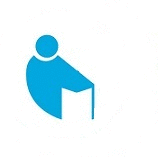Migraine
Migraine is a painful headache often associated with nausea, vomiting and sensitivity to light
Overview
Migraine headache begins as a mild headache and then develops into severe pain in the head may come these pains for a period of hours to days and then disappear, and then come back, and may move from one side to the other in the head. Symptoms such as nausea, vomiting and hypersensitivity to light and sound are usually associated, and can be severe and can be in conflict with your daily activities.
Warning symptoms occur indicating that the sister is about to start known as the ora an hour before or with a headache and lasts (15-60 minutes) the aura can include visual disturbances, such as (flashing lights and loss of vision)
Or other disorders, such as numbness on one side of your face or arm or leg and difficulty speaking.

Sister causes?
The true cause of the sister is not fully known, but scientists associate the sister with genetic abnormalities in certain areas of the brain.
The sister begins when the overactive neurons send signals to the blood vessels, which leads to the capture of these vessels and then expands and releases a group of chemicals and inflammatory substances that lead to migraines.
Migraine symptoms?
Migraines, which often begin in childhood, adolescence or early adulthood, can occur in four stages: gesture, aura, seizure, and post-initiation. Not everyone who has migraines goes through all stages.
1. Gesture:
One or two days before migraines, minor changes may be observed to warn of future migraines, including
• Constipation
• Mood change, from depression to high
• Urge to eat some types of food
• Stiff neck
• Increased thirst and desire to urinate
• Frequent yawning
2. Ora
For some, the aura occurs before or during migraines. Aura is an adverse symptom of the nervous system. They are usually visual, but they can also involve other disorders. Each presentation usually begins gradually, increases over several minutes and lasts for 20 to 60 minutes.
Examples of migraine supplication include:
• Visual phenomena, such as seeing multiple shapes, bright spots or flashes of light
• Loss of vision
• Feeling pricked as needles and nails in the arm or leg
• Weakness or numbness in the face or one side of it
• Difficulty talking
• Hearing noise or music
• Vibrational or other involuntary movements
3. Spells
Migraines usually last from 4 to 72 hours unless treated. The number of times migraines occur varies from person to person. Migraines can be rare or frequent several times a month.
Migraines may include:
• Pain on one side of your head usually, but often on both sides
• Heartache or pulsating pain
• Sensitivity to light and sound, sometimes to smells and touch
• Nausea and vomiting
• Migraine triggers
After a migraine, you may feel exhausted, confused and disfocused for a day. Some people were told that they were happy. Sudden brain movement may bring pain back into pain for a short time.
When do you see a doctor?
Migraines are often undiagnosed and untreated. If you regularly experience the signs and symptoms of migraines, keep a record of your seizures and how you have dealt with them. Then make an appointment with your doctor to discuss headaches.
Even if you have a history of headaches, consult your doctor if the pattern changes or if you suddenly feel different in your headaches.
Consult your doctor immediately or go to the emergency room if you have any of the following signs and symptoms, which may indicate a more serious medical problem:
• Severe and sudden headaches such as thunder shelling
• Headache accompanied by fever, stiffness in the neck, mental confusion, seizures, double vision, weakness, numbness or difficulty speaking
• Headache after head injury, especially if headaches get worse
• Chronic headache worsens after coughing, exertion, stress or sudden movement
• Pain caused by a new headache after age 50.
Risk factors
There are several factors that make you more likely to develop migraines, including:
Family history. If you have a family member with migraines, you may also have an increased chance of getting it.
• Age. Migraines can start at any age, although the former often occurs during adolescence. Migraines tend to peak during the 1930s and become gradually less and less frequent in the following decades.
• Sex. Women are three times more likely to develop migraines.
Hormonal changes.
Sister catalysts (migraines)?

There are a number of migraine stimuli, including:
Hormonal changes in women. Estrogen fluctuations, such as before or during menstrual periods, pregnancy and menopause, seem to cause headaches for many women.
Hormonal medications, such as oral contraceptives and hormone replacement therapy, can exacerbate migraines.
• Drinks. These drinks include alcohol, especially wine, and plenty of caffeine, such as coffee.
• Stress. It can cause stress at work or at home (migraine).
Sensory stimuli. Bright lights and sunshine can stimulate migraines, as well as loud sounds. Strong scents — including perfumes, paint broths, passive smoking, etc.— cause migraines in some people.
• Sleep changes. Losing sleep, getting too much sleep or traveling disorders can lead to migraines in some people.
• Physical factors. Intense physical exertion, including sexual activity, may provoke migraines.
Climate change. Changing weather or atmospheric pressure can cause migraines.
• Medications. Oral contraceptives and vasculatry, such as nitroglycerin, can exacerbate migraines.
• Foods. Old cheeses, salty foods and treated foods can lead to migraines. Also miss meals or fasting.
• Food additives. These sweeteners include aspartame and monosodium glutamate found in many foods.
Sister treatment methods at Al-Omran Medical Center
Alumran Medical Center doctors have extensive experience in the diagnosis and treatment of migraines and other types of headaches as doctors trained in neurological disorders (neurologists) as well as well-known physical therapists in the treatment and prevention of migraines . Doctors work together to provide you with the best possible treatment for your migraine.
Your treatment options depend on the frequency or severity of headaches, whether the headache is accompanied by nausea, vomiting, and the degree of disability caused by your headaches and other diseases. One of these ways.
1) Technique r. TMS magnetic stimulation through the brain
2) Chinese acupuncture: where it has proven its effectiveness in the treatment of migraine.
3) Pharmacological treatments which include pain killers and preventive medications
Pain pain medications these types of drugs are taken during migraine schematics and are intended to stop symptoms.
Medications used to relieve migraine pain work when taken at the beginning of a migraine attack as soon as migraine signs and symptoms begin and include (pain killers, triptans, dihydroizotamine (D.H.E. 45, Migranal) opiates, drugs Anti-nausea)
Preventive medications can help prevent migraines. That is, if you have frequent, severe or prolonged headaches that do not respond well to treatment.
Preventive medications aim to reduce the number of times migraines, severity and duration of seizures. Includes (Botox injections, anti-spasm drugs, antidepressants, antihypertensive drugs)
4) Lifestyle change
When migraine symptoms begin, try heading into a quiet, dark room. Close your eyes and take a break or take a nap. Place a cool cloth or cool compresswrapped in a towel or cloth on your forehead or neck.
Other practices that may soothe migraines (migraines) and exasperated migraines include:
• Try relaxation techniques. Relaxation exercises introduce you to ways to deal with charged situations, which may help reduce the number of migraines you may have.
• Put a routine for sleeping and eating. Be ware of sleeping too long or too long. You should schedule regular bedtimes and wake up every day. Make appointments for daily food.
• Take plenty of fluids. It can help you keep your body hydrated, especially while drinking water.
• Keep a blog to record headaches. Continue to register for a headache diary even after a doctor’s visit. It will help you learn more about migraine triggers and the most effective treatments for you.
• Exercise regularly. Regular aerobic exercise reduces stress and may help prevent migraines. If your doctor agrees, choose the sports activities you enjoy, such as walking, swimming and cycling. Warm up slowly because severe sudden exercise can cause headaches.
Regular exercise may also help lose weight or maintain a healthy body weight, and margarine may be a factor in migraines.
Get ready for your appointment
Here’s some information to help you prepare for your medical appointment.
What can you do?
• Track your symptoms. Keep a headache diary by describing each episode of an unusual visual disorder or sensation, including when it occurs, how long it lasts and what triggered it. Headache notes can help your doctor diagnose your condition.
• Your basic personal information, including any severe stress you have experienced or recent life changes, has been made to you.
• Make a list of all medications, vitamins or dietary supplements you take, including doses. It’s especially important to make a list of all the medications and dosages you take to treat your headaches.
Write down your questions to ask your doctor.
• Take a family member or friend, if possible, to help you remember the information you receive.
For migraines, questions to ask your doctor include:
• What is the most likely cause of migraines?
Are there any other likely causes of migraine symptoms?
What tests do I need to do?
Can migraines be a temporary or chronic disease?
What is the optimal behavior?
What alternatives to the initial treatment method do you suggest?
• What changes should I make to my lifestyle or the fever you suggest to follow?
I have these other health problems. How do I best deal with these problems together?
Do you have printed material that you can give me? Which websites do you recommend?
• Do not hesitate to ask other questions.
What you expect from the doctor.
Your doctor is likely to ask you a number of questions, including:
• How often does headaches occur?
How long have symptoms worsened?
• What improves your symptoms, if any?
• What makes your symptoms worse, if any?
• Have migraines affected any other member of your family?

